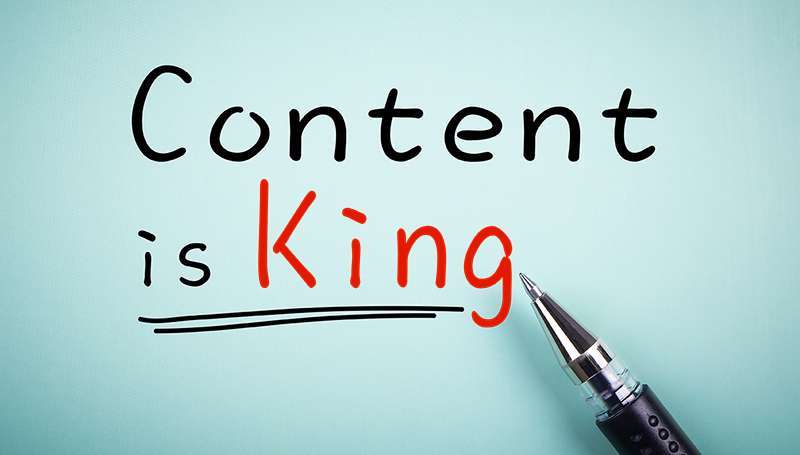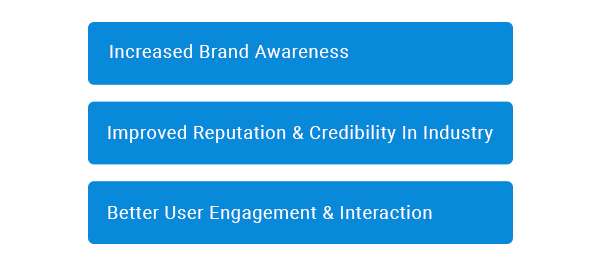Why is Content-Length Important? Finding the Perfect Length for Various Content Types

So, Why Do We Add Content to Our Websites?
We want to boost visibility on search engine results pages, attract more visitors, and hopefully gain new customers.
But, how do we make that happen? By putting out amazing high-quality content, of course!
Now, while we do agree that our top priority should be to produce unique, top-notch content that resonates with our readers, there’s more to it than just that!
Content marketing isn’t just about having the best quality content; it’s also about finding the perfect balance between quality and quantity (how lengthy your content is).
Let’s break it down and make it crystal clear for you.
The Concept of Content-Length
Content length, meaning the number of words or characters in a piece like a blog post or article, is crucial for both audience engagement and search engine optimization (SEO). It can vary from short to long and detailed.
Content length matters because it affects how your audience interacts with your work and its visibility on search engine results pages (SERPs). Very short content may lack value, while overly lengthy content might overwhelm readers.
Content length is one of Google’s 200 ranking factors.
Therefore, to improve your content’s performance, it is crucial to find the optimal length that engages your audience, meets search engine requirements, and helps achieve your content marketing goals.
So, what is the best length for website content for search engine optimization purposes?
This question often stumps SEO Teams and Copywriters.
The truth is – there is no one-size-fits-all answer to this question, as the ideal content length varies depending on the source.
HubSpot suggests that the ideal SEO content length is between 2,100 and 2,400 words based on their data, but they’ve also seen shorter blogs with less than 1,500 words perform well.
Hook Agency‘s research indicates that the best blog length for SEO in 2023 ranges from 1,760 to 2,400 words.
Additionally, SerpIQ conducted a study examining the top 10 search results by content length.
Here’s the Graph:
The first search result usually has 2,416 words, while the 10th result has 2,032 words.
This indicates that Google favours websites with more content. It’s noteworthy that the average word count doesn’t fall below 2,000 words.
So, is more always better?
Not exactly. If you expand articles by adding extra phrases, unnecessary adjectives, and adverbs or intentionally taking a roundabout approach to the main point, you could turn away readers.
So, simply having a higher word count won’t improve your search rankings.
Instead of just focusing on higher word count, it’s essential to consider other vital factors when crafting content to meet SEO objectives.
Top Factors to Consider When Aiming for Optimal Length Content
Understand Your Ideal Customer
Take time to learn about your target audience’s interests and needs regarding content creation, format (video/images/text), and delivery platforms (social media/blogs).
Once you know which content types engage your audience and how they prefer to receive them, you can create tailored content based on their preferences (short or long texts).
Additionally, consider the buyer’s journey stage. Select suitable content for each stage – shorter blog posts for awareness and longer ones for decision-making.
Understand Your Users’ Search Intent
For a long time, SEO experts aimed for longer content, sacrificing usability. This resulted in overly lengthy articles that didn’t serve their purpose well.
Instead, your writing should include keyword phrases that match users’ search intent – the number of questions it answers (and to what degree it answers them).
Furthermore, when aiming for good-length content, make it detailed and informative on a single topic rather than providing brief overviews.
This makes it more valuable, and search engines will rank your high-quality, comprehensive content higher than shorter pieces.
Avoid Content Overlap
In simple terms, content overlap occurs when users and search engines are unsure about the main focus of an article.
For instance, if we try to write 2,000 words on “Pencils” without a clear plan, we might include information about “Pens” or “other stationary” when running out of pencil-related content. This happens because the goal is to reach the target word count at any cost.
However, this approach weakens the page’s keyword focus and fails to meet search intent.
Content overlap occurs when we discuss unrelated subjects like “stationary” to lengthen an article about “apples” and achieve the desired word count.
As a result, Google may struggle to determine which article to rank for the term “apples,” causing it to switch between them and hurting your overall ranking performance.
With these three essential factors in mind, let’s delve deeper into the ideal lengths for different types of content.
Consider these three main factors when determining the best length for various content types.
The Ideal Length for Blogs and Articles
1. Blogs: Typically under 1,500 words, focusing on opinions or experiences.
2. Articles: Over 1,500 words, emphasizing hard facts and education, with more detail and external sources.
Both serve different purposes, influencing their length.
Three common categories of blogs and articles are response, staple, and pillar, with the following ideal lengths:
1. Response posts (1,500 words): Quick answers to specific questions.
2. Staple posts (2,500 words): Long-form responses with extra information, like step-by-step how-tos.
3. Pillar posts (3,000+ words): Highly detailed content on high-volume search topics to boost SEO rankings.
The average ideal length ranges from 1,500 to 3,000 words, with a sweet spot around 2,500 words.
The Ideal Length for The Website and Landing Page
Ideal Website and Landing Page Length
When making a website page, you usually aim to:
1. Rank high on search engines
2. Clearly explain your brand, product, or service
3. Prompt visitors to take action (via a CTA)
The first goal relies on page length and keywords, while the last two refer to the page’s content. To make a high-performing web page on Google and other search engines, learn how they analyze and categorize pages.
Keywords and word count impact your ranking. Google’s algorithm prefers longer content of at least 300 words. Anything shorter is seen as low-quality, resulting in a lower SEO rank.
Therefore, target a minimum of 300 words per web page.
But is there a maximum length?
Your pages can be as long as needed, as long as the information serves its purpose. Word count matters, but an effective copy is more important.
For example, a landing page for a new product should clearly and concisely describe your offerings while remaining engaging.
The Ideal Length for Sales Collateral
Sales collateral helps move the sales process forward by guiding customers through sales funnels. There are four key types:
1. Sales scripts: Read by sales representatives, not customers; a sales script should take 15-30 minutes to read aloud (500-1,500 words). However, the introduction should be shorter (3-5 minutes or 200-500 words) as it’s where customers decide to continue or end the conversation.
2. Brochures: Both physical and digital brochures promote products or services concisely. Aim for 200-350 words for general content and 350-450 words for more detailed information aimed at customers familiar with your business.
3. Fact sheets: These promotional materials present product or service features and benefits using bullet points. Keep them brief at around 200 words or less, as their purpose is to start the sales funnel process.
4. Pitch decks: Used to pitch products or services to clients, investors, or partners, these presentation-style materials should have no more than 20 slides with about 50-60 words per slide. Keep them concise for easy understanding.
The Ideal Length for Social Media Post
Social media is highly crucial with its 4 billion users worldwide. To succeed, create well-performing, optimized content for each platform. The top text-based platforms are Twitter, Instagram, and Facebook.
Twitter (Tweets): Limited to 280 characters, ideal tweets range from 70 to 120 characters.
Instagram (Captions): The maximum limit is 2,200 characters; however, aim for shorter captions between 125 and 150 characters.
Facebook (Posts): With a 63,206 character limit, focus on posts between 50 and 200 characters for best results.
The Ideal Length for Guides and Ebooks
Guides and ebooks can greatly vary in length, depending on their purpose. Generally, they are used as lead magnets to encourage potential customers to take action.
Both guides and ebooks can be short-form or long-form. As lead magnets, they should be easy and quick to read, with a word count of 2,000 to 5,000 words. Ideally, lead magnets should be readable within 10 to 20 minutes.
Long-form guides and ebooks are usually sold as products, offering customers more detail and value. Their word count ranges from 5,000 to 10,000 words.
The Ideal Length for Emails and Newsletters
Email marketing is great for nurturing leads and maintaining contact with potential and current customers. The ideal length of an email or newsletter varies for each part, including the subject line, preview text, and body text (or newsletter content).
Subject lines: This is the email’s first visible text and serves as its title. Keep it short and catchy, about 10 words or 50-60 characters.
Preview text: Found below the subject line, this text offers a quick summary of the email content. Aim for 30-90 characters to ensure it displays properly in recipients’ inboxes.
Email body copy: For standard emails, use 50-125 words since recipients spend roughly 10 seconds reading them. Shorter emails are easier to read and more likely to get a response or click.
Newsletter copy: Although newsletters cover multiple topics and link to longer content, keep them brief, with 200-300 words total or around 15-20 lines of text.
Final Words
Optimizing content length is crucial for achieving online success, as it fosters increased sales, higher engagement, and a strong online presence.
By adhering to the recommended lengths and considering your target audience’s preferences and search intent, you can create valuable and well-optimized content that resonates with both your readers and search engines.
Why is Content-Length Important? Finding the Perfect Length for Various Content Types Read More »














